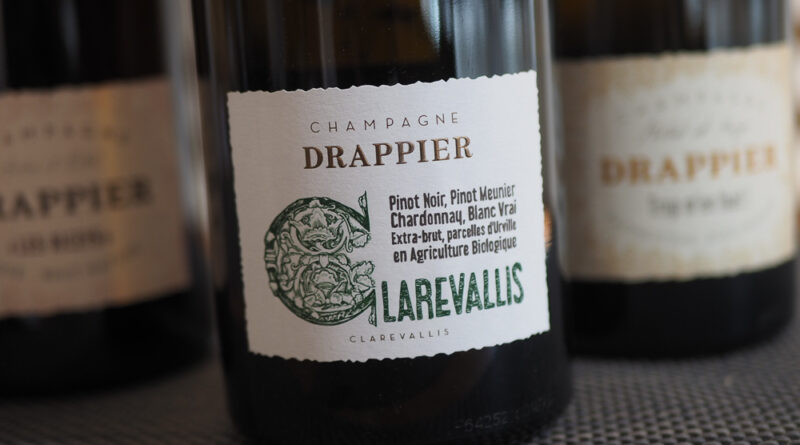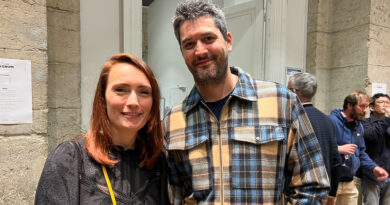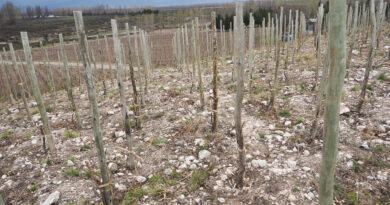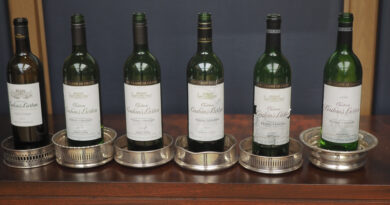Champagne Drappier, a forward-thinking house from the south of the region
Website: https://www.champagne-drappier.com/en/
Drappier are a forward-thinking, family-owned Champagne house based in Urville in the Côte des Bar, a village of 120 people. Three generations are currently involved. Michel Drappier (7th generation) is the boss, and he is assisted by his three children – Charline (marketing), Hugo and Antoine. The family settled here in 1808, and Michel’s father, André, is still alive at 95 and acts as the chairman. Charline says jokingly that he’s their worst customer: he comes in at 11 am, has a glass of Champagne, then lunch and then naps. He comes back at 4 pm for more Champagne. Carte d’Or is his preferred tipple, which may have saved them some money: someone calculated that he’s drunk 8000 bottles so far.
I caught up with the family over a Zoom call, and then more recently met with Charline in London to taste through some more of the wines.
Drappier are located in the southern part of the Champagne region. The Côte des Bar is closer to Chablis than Reims and Epernay, which are 130 km north. But it has 8000 hectares of vines, so it’s a significant region, with about twice the area under vine as Chablis. It’s history is as a supply region for the northern houses, and it has no premier or grand crus.
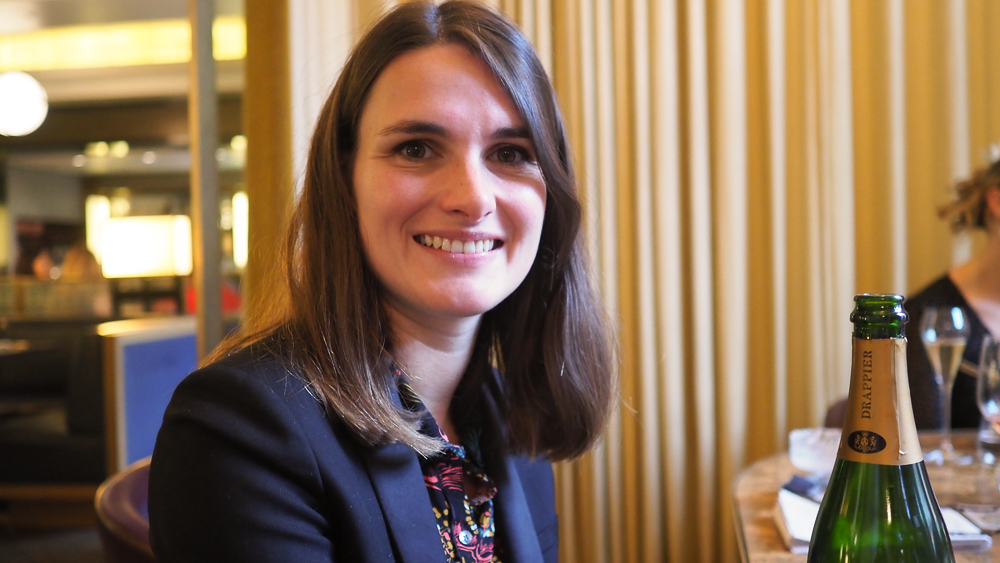
The soil here is the same as Chablis – Kimmeridgian limestone. ‘The soil is poor,’ says Michel Drappier, ‘but it gives great wines.’ The Romans planted the vineyards here, finding the south-facing slopes with their limestone soils ideal for viticulture. They planted a range of ancient varieties.
But this was to change in the 12th century. In 1115, a monk from the Cîteaux Abbery in Bourgogne, Saint Bernard of Clairvaux, imported the Morillon Noir grape variety. This is Pinot Noir. ‘We remain very loyal to this variety,’ says Michel. It replaced the varieties the Romans had planted, and a few decades later spread northwards to the Vallee de la Marne. The wine from here – a still Pinot Noir – gained fame. The Abbey founded here produced the wine, and build extensive cellars, including one in Urville constructed in 1152.
Drappier are a small house. They make on average 1.6 million bottles a year, and two-thirds of their grapes come from their own vineyards. They have 62 hectares of their own vineyards, and farm another 50 hectares of other peoples’. They also buy grapes. Most of these are close to Urville. Half they farm organically, and the rest is farmed conventionally but with no herbicide. ‘It is quite difficult to be organic in Champagne,’ says Hugo. ‘We try to work as close to nature as is possible.’ They are carbon neutral.
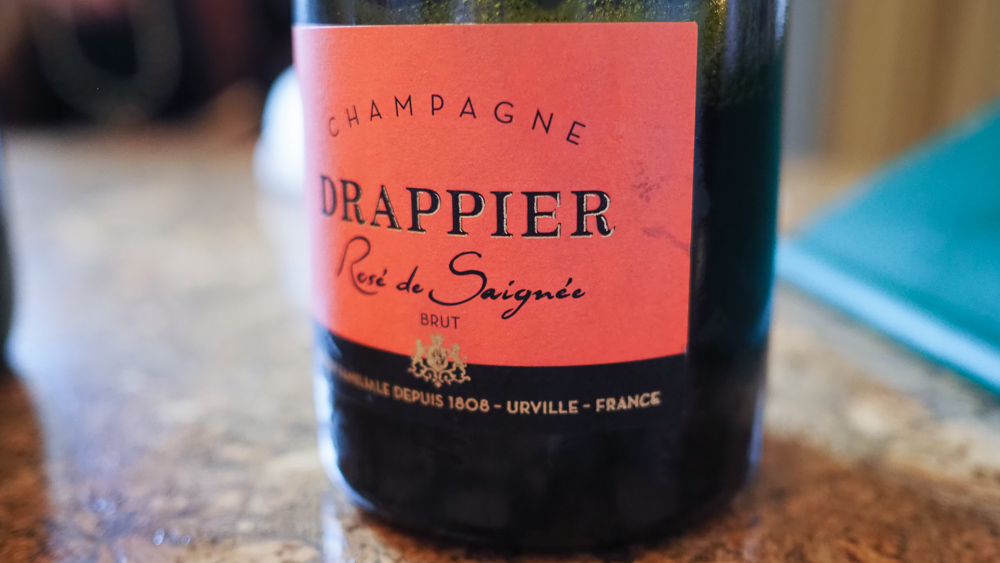
Pinot Noir is their main grape variety, making up 70% of their vineyards, but they have a specialism in the rarer Champagne varieties: Petit Meslier, Arbanne, Pinot Gris (known here as Fromanteau) and Pinot Blanc (Blanc Vrai). They have 3.5 hectares of these four varieties.
They are also known for their reluctance to use much sulfur dioxide, with some of their cuvées having no added sulfites at all. Michel explains that part of this preference for low sulfite wines is ‘purely selfish’. ‘Father and I are intolerant,’ he says. ‘Sulfites are no problem in small quantities, but they dry out your palate and act as an anaesthetic to your taste buds.’ They export some no-added-sulfite wines to New Zealand and the Pacific Islands, ‘but you need to be careful.’
Charline says that even though they are in the warmer south of Champagne, climate change has not been an issue so far. ‘Maybe Champagne needed a bity more sun,’ she says. ‘What can be an issue is heatwaves,’ she adds. ‘Some vintages, like 2003 and 2006, were too warm.’ She says that if things continue as they are, then warming could be a problem and they might have to re-think the blend.
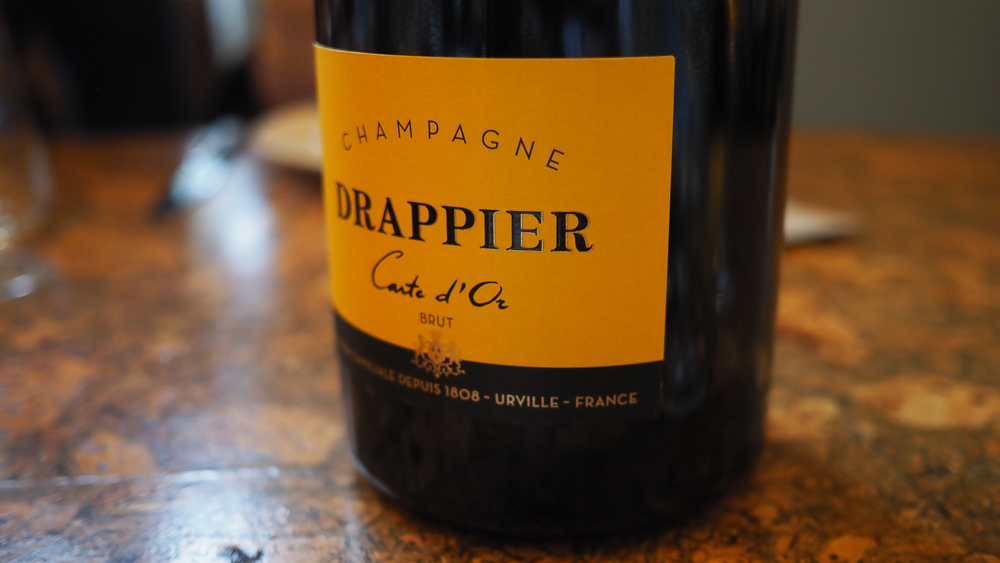
THE WINES
Champagne Drappier Carte d’Or NV France
80% Pinot Noir with 15% Chardonnay and 5% Pinot Meunier. Dosage is 6.5 g/litre, with the liqueur aged for a minimum of 15 years. This is 2018 base with 10% each of 2017 and 2016. Lovely citrus core with some yellow plum and a touch of cherry. Has lovely pure fruit, a crystalline edge and good texture. 90/100
Champagne Drappier Clarevallis Extra Brut NV France
12% alcohol. This is a blend of 75% Pinot Noir, 10% Pinot Meunier, 10% Chardonnay and 5% Blanc Vrai (Pinot Blanc). It’s organically farmed. 90% is from 2017 and 10% is reserve wines; all vinification is in stainless steel. 4 g/litre dosage, and low sulfites (total is 20 mg/ml). Rich yellow gold in colour, this is bold, rich and honeyed with some complex notes of toast, nuts and spice. There’s some good acidity, and the palate shows lovely citrus and pear fruit, finishing with spice, patisserie and hazelnut, as well as toast. Has a hint of green and finishes tangy. A really complete, complex Champagne with a vinous quality. 93/100
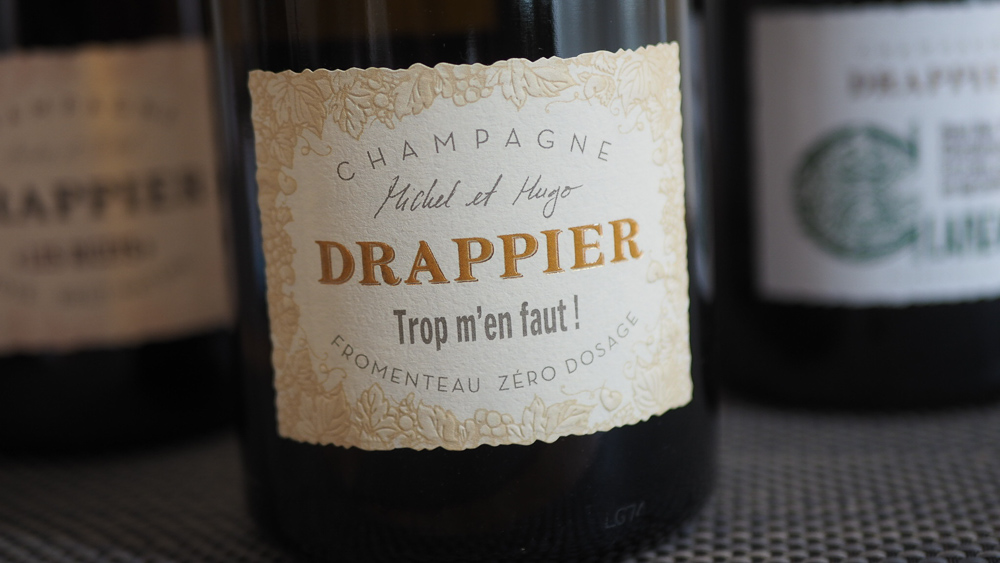
Champagne Drappier Trop M’en Faut! NV France
12% alcohol. This is a beautiful rarity: it’s 100% Fromenteau (Pinot Gris) with zero dosage. Bottled in 2019 this is half 2017 and half 2018, with some aged in barrel. Organically farmed. The name is a spoonerism: they weren’t allowed to use Fromenteau, so the made-up name actually means ‘It’s so good I don’t have enough of it,’ while alluding to its varietal origins. This is from a very warm south-facing plot, and the vines were planted in 2010 by Michel. It’s surprisingly low in acidity, with a pH of 3.55 and a TA of 6 g/litre, but there is some freshness from the phenolics. Half of the grapes were used to make a still wine (Coteaux Champenois). Yellow gold in colour. Toasty, spicy, honeyed nose. The palate is rich and has a spicy frame with sweet pears, a touch of cherry and some baked apple. Powerful and textural with some orange peel, nuts and table grape. So many layers. 94/100
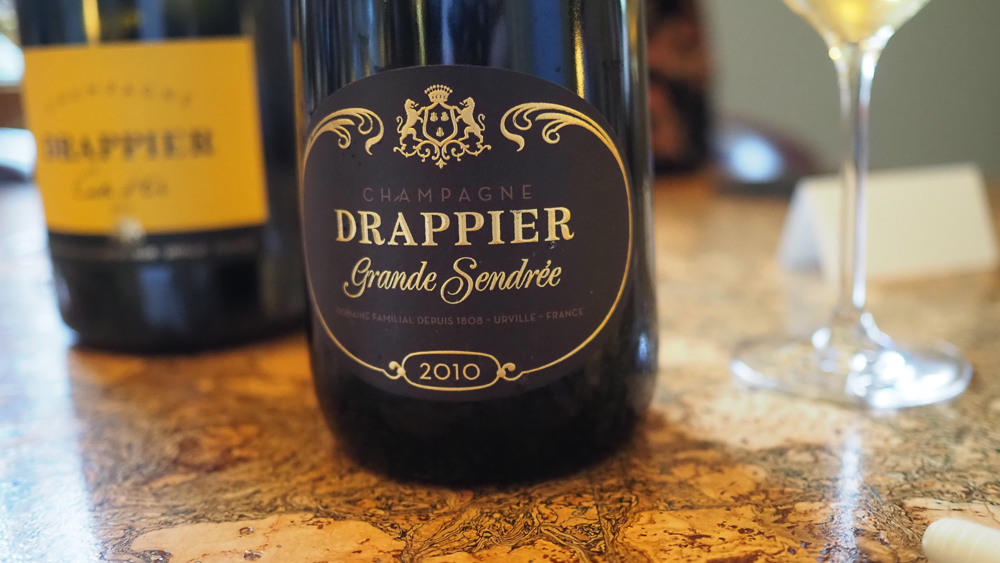
Champagne Drappier Grande Sendrée 2010 France
A blend of 55% Pinot Noir and 45% Chardonnay. Organically farmed from a single parcel: the name refers to a wood that burned down in 1836 (Sendrée = ashes), and the block faces north. 30% is fermented in a 5000 litre foudre, and it is usually bottled late, in June. Disgorged in 2020 with a dosage of 4 g/l. Complex and taut with a touch of savouriness. Fine nuts, spice and some mineral notes with a lovely acid line, as well as a touch of salinity. Still pure and youthful with great concentration. 93/100
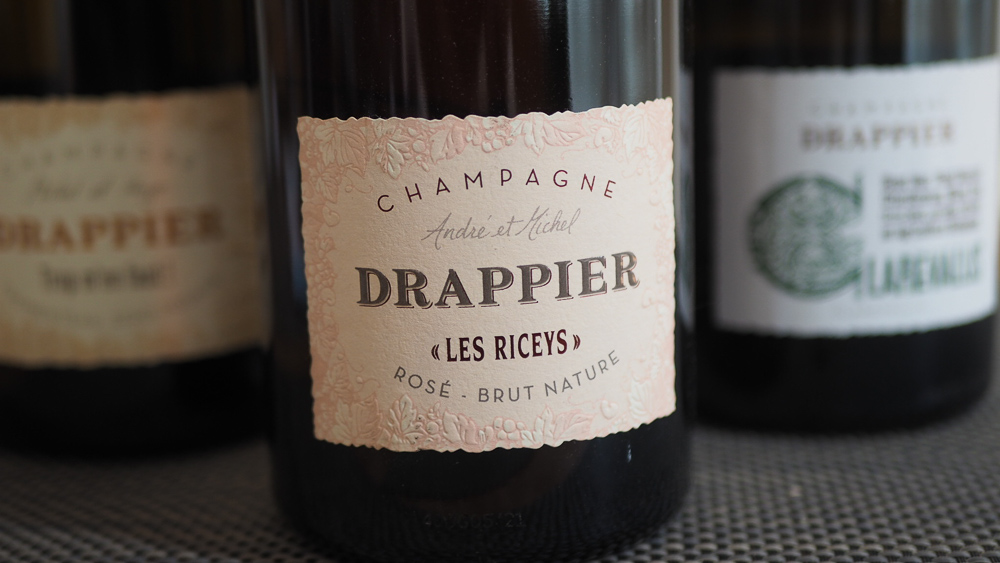
Champagne Drappier ‘Les Riceys’ Rosé Brut Nature NV France
Drappier have had a plot in Les Riceys for a while. This is a Burgundy part of Champagne, that was moved to Champagne during the revolution 200 years ago. 40% 2017, 40% 2018, 20% a perpetual reserve with several older vintages. The grapes have a carbonic maceration for five days, which is very unusual in Champagne. 50% vinified in oak. Full pink/red colour. Very floral and expressive on the nose with red cherries, strawberries, a bit of almond and some apple. Fine textured on the palate, showing subtle almond, wild strawberry and some cherry. Has precision allied to richness, but with a dollop of harmony. Quite vinous, and very special. 94/100
Champagne Drappier Rosé de Saignée Brut NV France
The grapes for this are sorted (normally not done in Champagne, but it makes sense for saignée) by five people, then it is destemmed into tank, and there is skin contact with whole berries, with occasional stirring. Then it goes to press from tank. Dosage is 6 g/litre. Bright pink in colour. This is bright and fresh with lovely cherry and raspberry fruit, showing good acidity. Juicy with supple cherry fruit to the fore. Very pure. 92/100

